Why you need both Sales Training & Sales Enablement
Although sales representatives can be trained to prepare for sales talks, this may not necessarily help the firm meet its goals.
Prospects and buyers are more distinctive and knowledgeable, and deal cycles are longer and more complicated. There is also a lot of competition. Sales representatives need more advanced knowledge and skills than ever before to better engage with prospects and customers and continue closing deals as remote selling is added to the mix.
As a result, businesses are constantly looking for fresh approaches to grab the attention of their customers, acquire an advantage, and outperform the competition. They are looking into sales training and sales enablement to improve their sales strategies.
Sales training and sales enablement are two facets of the same concept. Without the other, neither can operate at full capacity. While sales enablement provides the tools and resources, sales training gives sellers the know-how to effectively utilize those resources.
Let's compare sales training and enablement to better understand the advantages of each.
How does sales enablement work?
Sales enablement gives salespeople the tools they need to close the deal. The resources and tools that sales enablement offers are mainly digital assets that the seller may utilize to determine what will appeal to the buyer or share with the client to persuade them to buy. These materials are not instructed.
There are three main focuses of the sales enablement process.
Continuous Sales Process Improvement
The sales enablement team frequently investigates new ideas, market developments, technologies, and methods intended to maximize a company's sales performance, acting in many respects as the research and development division of the sales department. These are some particular tasks that these teams carry out:
- Providing representatives with the appropriate content to achieve particular sales goals.
- Obtaining critical data on demographics and buyer profiles.
- Putting in place new procedures and tactics for salespeople to use.
Testing and Putting in Place Useful Technology
Various technologies and tools are available to support and improve sales activity. These include solutions that automate time-consuming tasks like data entry, assist sales representatives in seamlessly communicating with consumers across channels, and let sales representatives organize their daily schedules.
Choosing the best tools for the job can occasionally be difficult with so many available choices. Sales enablement may ensure that a company's salespeople are always equipped with the most cutting-edge and effective sales solutions by continuously testing new technologies and assisting in implementing the solutions that are determined to be most effective.
Monitoring and Making Use of Data Analytics
One of the best ways for sales teams to evaluate their performance and spot areas for development is through tracking sales metrics and KPIs. A sales rep or supervisor may not have the skills to create these monitoring systems or identify and correct data-collection mistakes. They may not have much time in their daily schedules for studying and analyzing data.
Organizations can make sure that their sale process is data-driven by delegating this task to sales enablement, freeing up salespeople and sales managers to concentrate on what they do best, i.e., selling.
How does sales training work?
Giving a seller or sales team the knowledge, tools, and attitude necessary to become a successful salesperson is known as sales training.
A third-party organization with experienced facilitators, subject matter experts, and support staff frequently manages training. Virtual learning and in-person education are both viable options for training. Typically, post-training activities, sustainment programs, and workflow tools are used to reinforce newly learned abilities.
The 4 Main Aspects of the Sales Training Process
Optimized Processes for Maximum Efficiency and Sales
When comparing sales enablement with sales training, the objective of strengthening your sales team is one aspect where the two programs overlap.
Sales training focuses on offering guidance and practical exercises so that reps can practice new tactics and strategies, in contrast to sales enablement, which focuses on finding and testing new approaches. This works toward assisting sales reps to more frequently meet their targets and increase the deal size for each type of customer. Organizations nowadays prefer modern sales training software to provide training to their salespeople. These types of software are versatile and flexible, and organizations can customize them to meet their specific needs.
Education that is ongoing for sales representatives
Most of the training salespeople receive during onboarding is completely forgotten within the initial three months of employment. If your reps only receive training during the onboarding process, there's a significant risk that knowledge retention won't be up to pace.
By adopting an ongoing sales training program, you can ensure that your salespeople receive the education they require to preserve their skills.
Deal Coaching
Another focus of sales training is deal coaching. In comparison to other areas of sales training, enabling your agents to effectively qualify the opportunity at hand, comprehend their position with the buyer, and establish a clear action plan for each deal is important.
Deal Training
The focus of sales training also includes deal coaching. Most important is to train your salespeople to correctly qualify the opportunity at hand, comprehend their relationship with the buyer, and create a solid action plan for each offer, as they directly affect the win rate compared to other areas of sales training.
Following the deal coaching session, the top sales managers check in to see the results and turn these learnings into best practices for the overall sales team.
Engaging Sales Kickoffs
If you work in sales, you're probably already familiar with the yearly start. Hosting a kickoff at the start of a new fiscal year or when a new product is released is standard procedure. This is the leadership's chance to inspire front-line salespeople, educate the team on new sales initiatives, and train them on updated sales processes and methodologies. Frequently, a key component of these start events is sales training.
While year-round preparation is necessary, kickoffs are crucial for bringing everyone together (physically or virtually) and focusing intensely on the abilities that will be most critical in the next year. This may entail bringing in an outside expert to advise or having top-performing salespeople share their winning strategies and reiterate fundamental lessons.
Why Do You Need Both Sales Training and Sales Enablement?
Sales training promotes productivity and expansion.
The onerous nature of learning new workflows and remaining current with best practices prevents sales professionals from actually starting their work. Additionally, connecting with prospects and advancing agreements through the sales pipeline requires a great degree of ability and knowledge. The good news is that continuing coaching and training in sales causes a sales representative's productivity, efficiency, and confidence to develop enormously.
How come? First, sales training gives representatives the abilities they need to hear, recognize, and express the wants of customers. They can then suitably align the perfect product or service to best fit their prospects' wants and needs because they have the power to fully understand your products and services. Simply said, this indicates that deals may move through the sales process effectively and conclude more quickly.
Sales enablement provides the ROI needed for sales training.
One of the most difficult aspects of sales training for a business is assessing its impact on the bottom line. Sales enablement delivers the ROI required for sales training. It seems that a salesperson will accomplish more sales as they advance in skill. But how can you link performance to a particular sales training program?
Organizations frequently see sales training as more of an investment in their salespeople and a motivational tool to forge closer bonds with their staff.
The key to demonstrating the value of sales training is sales enablement. It is feasible to link sales training with statistics on the backend to assess performance using a sales enablement strategy. Sales enablement does this kind of tracking, and as soon as the ROI is realized, more sales programs and training are offered. This leads to the quick expansion of the organizations.
Conclusion
Sales enablement and training are much more than just a method or tool for guiding and instructing your sales representatives. Your sales staff will benefit from it as it grows. Sales training and enablement guarantee that your salespeople spend less time thinking about the next phases of the sales process and more time concentrating on what they do best: selling. It does this by boosting confidence and keeping sales reps on the same page.













